The 32nd
LaureateArchitecture
Glenn Murcutt
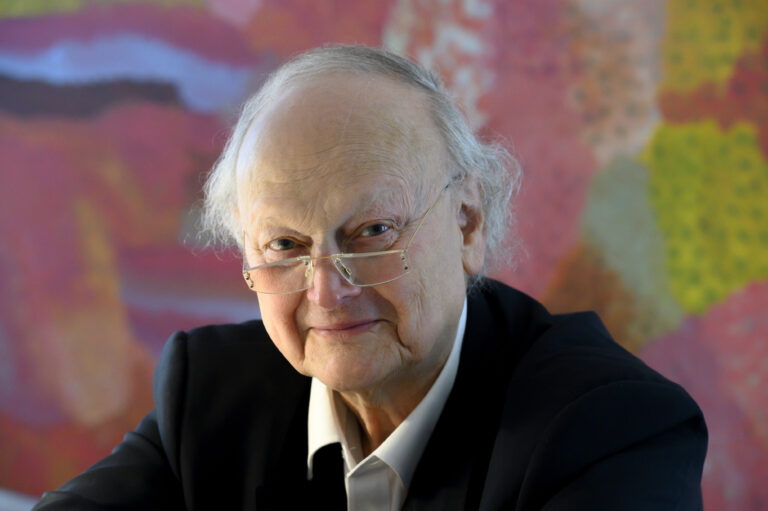
Glenn Murcutt is an architect ahead of his time – an architect who has spent his career creating modest,environmentally-responsible buildings rooted in the climate and tradition of his native Australia. Born in London,he spent his childhood in Papua New Guinea,studied architecture at university in Australia,starting a private practice in Sydney in 1969. He works primarily as a solo practitioner,allowing him to create “uncompromising work”. He also prefers to work without computers,drawing freehand,finding solutions to design issues instinctively. As he says,he is not a creator,but a discoverer,adding,“Every great building is already there,but to be discovered. It is not created.” Echoing the Aboriginal phrase,“Touch the land lightly",his architecture has a poetic beauty and lightness,in harmony with nature while at the same time,the rationality of modernist architecture and ecological wisdom shine through. His earliest commissions were for private houses; Marie Short House (1975) being one of his most celebrated. More recent works include public projects such as the Arthur and Yvonne Boyd Education Centre (1999),designed with architects,Wendy Lewin and Reginald Lark and the Australian Islamic Centre (2016),undertaken with architect,Hakan Elevli. Murcutt is the first Australian to receive the Praemium Imperiale.
Biography
Glenn Murcutt is an architect ahead of his time – an architect who has spent his career creating modest,environmentally responsible buildings rooted in the climate and tradition of his native Australia.
Born in London,Murcutt often talks of his buildings being designed to have both prospect and refuge – an outward looking front with a back that provides protection from incursion – the result of his early childhood years living in Papua New Guinea.
The family moved back to Australia in 1942 and from the age of 13 he was introduced to his father’s joinery workshop where he spent his school holidays learning to construct most of the timber elements incorporated in domestic buildings. In 1955,Murcutt worked alongside skilled tradesmen on the construction of the family home – providing invaluable experience. His father encouraged Murcutt’s growing interest in design,providing him with international architecture magazines and books while discussing and having him analyze the relative merits of the leading international architects of the day.
Murcutt graduated from The University of New South Wales with a Diploma in Architecture but determined to enrich his knowledge by travelling to Europe to see buildings by architects whose works he had only seen in magazines,as well as to see the vernacular designs of countries like Greece and Finland.
Returning to Australia,he initially joined an architectural practice before setting up on his own in Sydney in 1969. He continues to work primarily as a solo practitioner,enabling him to ensure that he can create "uncompromising work".
Not only does he work without staff,he also primarily works without computers,preferring to draw by hand,finding solutions to design issues instinctively. As he says,he is not a creator,but a discoverer,adding,“Every great building is already there,but to be discovered. It is not created.”
His earliest commissions were for private houses; Marie Short House (1975) being one of his most celebrated. However,more recently,he has been involved with public projects such as the Arthur and Yvonne Boyd Education Centre (1999),designed with architects,Wendy Lewin and Reginald Lark and the Australian Islamic Centre (2016),undertaken with architect,Hakan Elevli. Murcutt uses simple materials such as local timber,corrugated steel,stone,glass and concrete and advocates an architecture based on a process of observation and discovery – one that utilizes and works with the characteristics of the land,light and materials – enabling him to create buildings that can be comfortable in winter and summer,without the need for air conditioning. On being asked why he only builds in Australia,Murcutt explains,“You need to speak the language of the people for commissions abroad,language provides the nuances of a culture. Then there must be understanding of the annual climatic variations and a host of other issues: climate,soil and vegetation.” Additionally,relationships with creative collaborators whose native language is English are required.
Echoing the Aboriginal phrase,“Touch the land lightly”,his architecture has a poetic beauty and lightness,in harmony with nature while at the same time,allowing the rationality of modernist architecture and ecological wisdom to shine through. Among his many awards are the Pritzker Prize (2002) and the American Institute of Architects Gold Medal (2009). He is the first Australian to be awarded the Praemium Imperiale.
Chronology
RAIA Gold Medal
Bowali Visitor Centre,Kakadu National Park,Northern Territory
RIBA International Fellow
Arthur and Yvonne Boyd Education Centre,Riversdale,undertaken with architects,Wendy
Lewin and Reginald Lark
-
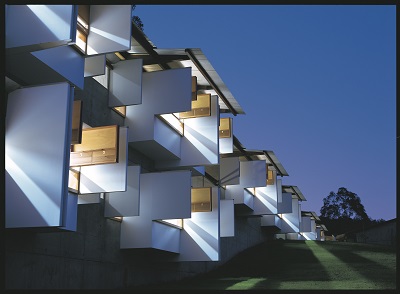
Arthur and Yvonne Boyd Education Centre, 1999
-
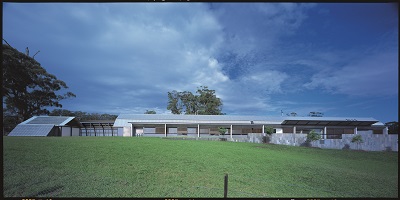
House in the Southern Highlands, 2001
-
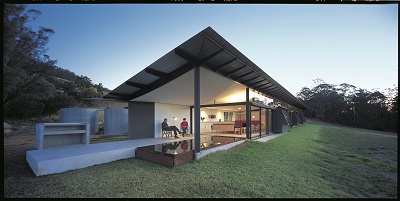
Walsh House, 2005
-
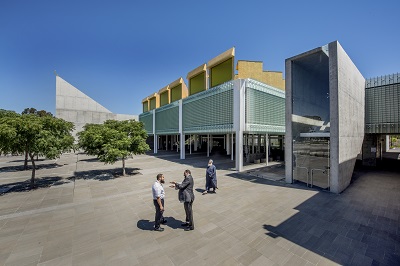
Australian Islamic Centre, 2016
-
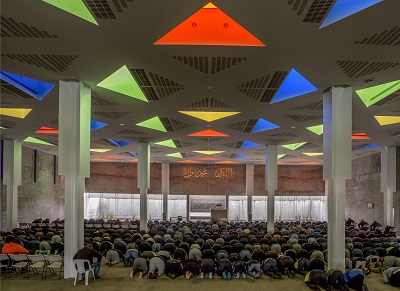
Australian Islamic Centre, 2016
-
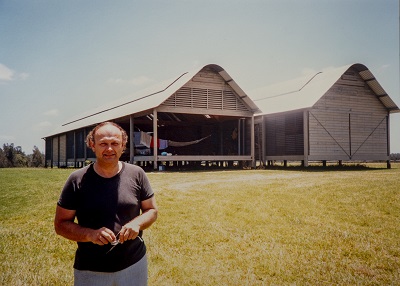
In front of Marie Short / Glenn Murcutt House

